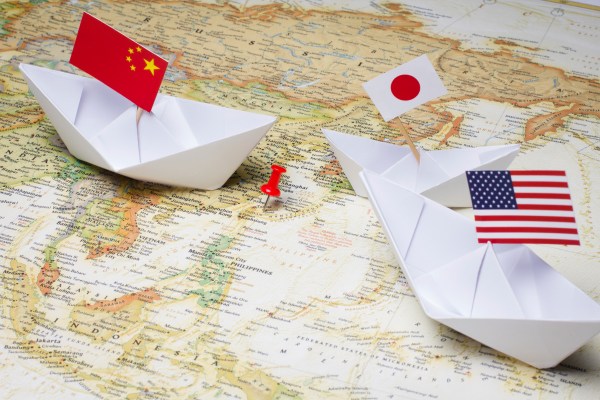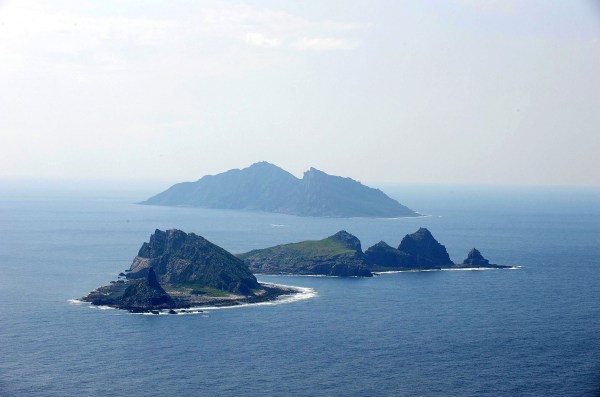U.S. sailors load an air-to-air missile onto an F-18 on the deck of the carrier U.S.S. George Washington in the western Pacific, not far from China, on Nov. 22, 2013
The news of a welcome, if temporary, early-Sunday diplomatic breakthrough between the international community and Iran over its nuclear-development efforts overshadowed a far more ominous announcement from China.
Beijing declared an “air-defense identification zone” Saturday over a swath of the East China Sea that is home to islands administered by Japan. It could spin out of control far more quickly than the spinning Iranian centrifuges that much of the world believes Tehran has been using to develop nuclear weapons. The eight barren isles — two of which are under control of the U.S. military — are called the Senkaku Islands (in Japan) and the Diaoyu Islands (in China).
While the U.S. has declared it takes no position on what Secretary of State John Kerry has called the “ultimate sovereignty” of the islands, Defense Secretary Chuck Hagel said shortly after China’s announcement that it represented a “destabilizing attempt to alter the status quo in the region.” He made clear that the U.S. would go to war alongside Japan to preserve Tokyo’s ambiguous control of the islands, as he did last month in the Japanese capital. “Since they are under Japan’s administrative control,” Hagel said on Oct. 3, “they fall under United States treaty obligations to Japan.”
China has said that as of Nov. 23 its military forces will take “defensive emergency measures” if aircraft enter the zone without reporting their flight plans or identifying themselves to China. While Beijing didn’t detail the measures it might take, it dispatched a pair of reconnaissance planes, backed by fighter jets, into the zone the same day, the Defense Ministry said. (Japan sent a pair of F-15 fighters airborne in response; the Chinese spy planes avoided confrontation by heading home a short time later, according to officials in Tokyo.)
But with both sides sending warplanes and warships to the islands in an increasingly bellicose game of maritime cat and mouse, a mistake, deliberate or otherwise, could set off a shooting war in short order, Pentagon officials fear. General Herbert “Hawk” Carlisle, chief of the U.S. Air Force in the Pacific, recently warned that China’s “increasingly … aggressive approach” toward the islands runs “the risk of creating the potential for miscalculation.”
The dispute is part of the ebb and flow of regional power in a tense corner of the world, where China, Japan and Taiwan all lay claim to the islands. While uninhabited, the islands’ surrounding waters are rich in fish, natural gas and oil.
Tensions have been on the rise in recent years over conflicting claims to the islands, and spiked last year after Japan bought three of the islets from a Japanese family. Beijing claims Japan stole the islands from China in 1895, while Japan says they were unclaimed by any nation when it took them over. Nationalists in each country are insisting they belong to their side.
“Given the historical animosity between China and Japan and the strong nationalist sentiment on both sides regarding the sovereignty of the islands, the Senkaku Islands dispute is especially intense,” said a report issued last Wednesday by the U.S.-China Economic and Security Review Commission, a study group created by the U.S. Congress in 2000. “Tensions continued to simmer throughout 2013 as both sides enhanced their naval and maritime law enforcement presence in the disputed waters to assert their claims.”
Between 1945 and ’72, the U.S. ruled the islands, and to this day the U.S. military controls two of them — Kuba and Taisho. The U.S. used Kuba for bombing practice until 1978. The status-of-forces agreement between Tokyo and Washington says that “the facilities and areas used by the United States armed forces shall be returned to Japan whenever they are no longer needed for purposes of this Agreement.” Yet the pair of islands remains under U.S. control 35 years after the U.S. last conducted bombing runs there.
In fact, Japanese citizens cannot land on either of the islands without first getting permission from the U.S. military, Akira Kato, a professor of political science at Tokyo’s Obirin University, said in an April report by the East-West Center in Washington, D.C.
“The Senkaku dispute is a part of a power struggle between the existing superpower — the United States — and the rising revolutionary power — China,” said the study by the East-West Center, a 1960 creation of the U.S. Congress. “As a militant Japan did in the past, dictatorial China is now challenging the existing global order which was created and is protected by the United States. China is beginning to test if the United States has the capacity to maintain the current global order through testing U.S. resolve in regional disputes, including in the Senkaku Islands.”
The islands’ 1,700 acres of desolation now loom as the firing pin in the U.S. military’s pivot to Asia.



